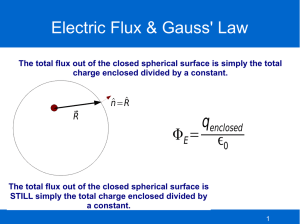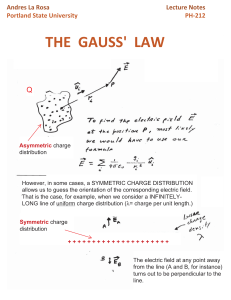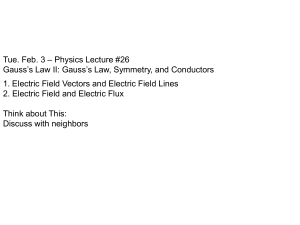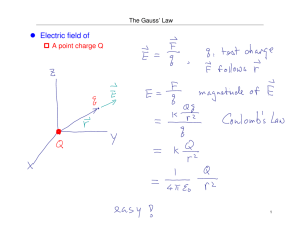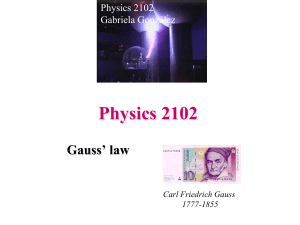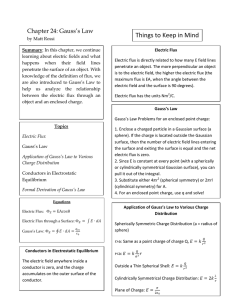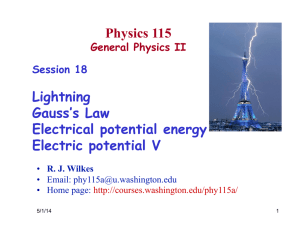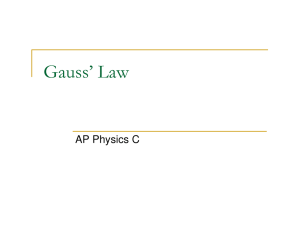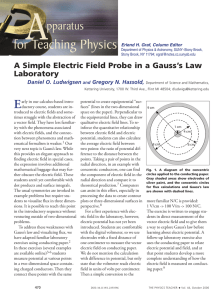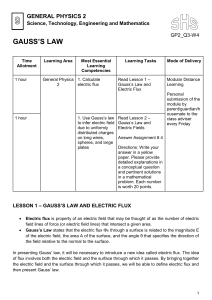Gauss's Law: Electric Flux and Enclosed Charge
advertisement
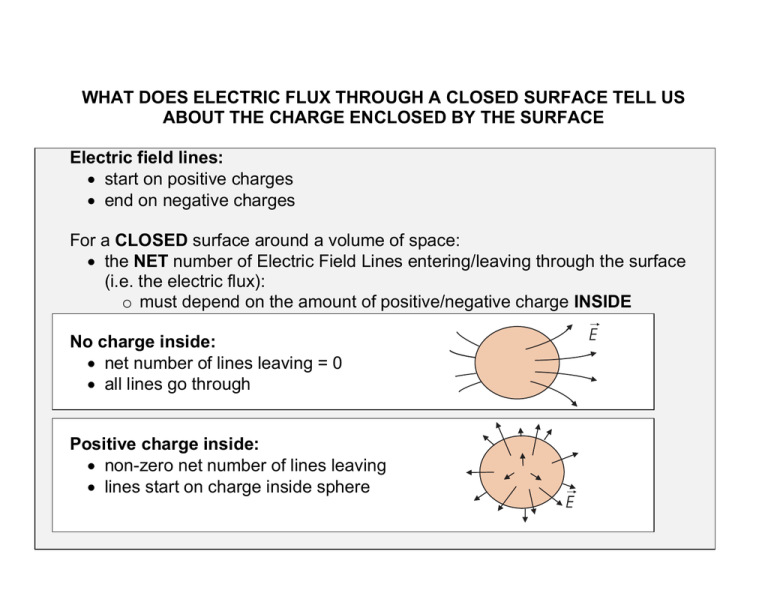
WHAT DOES ELECTRIC FLUX THROUGH A CLOSED SURFACE TELL US ABOUT THE CHARGE ENCLOSED BY THE SURFACE Electric field lines: start on positive charges end on negative charges For a CLOSED surface around a volume of space: the NET number of Electric Field Lines entering/leaving through the surface (i.e. the electric flux): o must depend on the amount of positive/negative charge INSIDE No charge inside: net number of lines leaving = 0 all lines go through Positive charge inside: non-zero net number of lines leaving lines start on charge inside sphere GAUSS’S LAW Connects: charge enclosed by closed surface to NET Electric Flux through surface Look at positive charge +q at centre of a sphere of radius r At every point on surface: E || Ai A o i is surface normal at that point Component of E perpendicular to surface is kq E n | E | e2 (at every point on surface) r So for every point on surface: kq E Ai E n Ai e2 Ai r Now calculate total flux through whole spherical surface around q e lim Ai 0 E A E dA n over surface n i over surface ke q dA 2 r Factored En out of integral since constant everywhere on spherical surface Remaining surface integral dA : o sum of area elements over sphere surface (i.e. surface area of sphere) 2 o So: dA 4r ke q 2 So flux is: e r 2 4r 4 ke q 1 12 2 2 k But e 4 where 0 8.85 10 C / N m is permittivity of free space 0 RESULT (Gauss’s Law): e qinside 0 Says that flux through a closed surface is: o proportional to the charge inside o independent of the radius (for a spherical surface) Why does this work? Says number of electric field lines through spherical surface is the same for all radii 1 2 E 2 but A r so: r o E dA is independent of r IMPORTANT: Gauss’s Law applies to any closed surface For a given charge q, the net flux through a closed surface around it is: o Independent of the shape of the surface o Independent of the location of the charge inside the surface Can choose surface that best suits the problem GAUSS’S LAW (general statement): qenclosed e E dA closed surface 0 Powerful way to calculate electric field if we can factor En out of integral o Trick is to choose surface so that En is uniform over all or part of surface Definition: Gaussian Surface A closed surface selected for use in a Gauss’s law calculation Careful choice can simplify calculation of electric field Using Gauss’s Law: 1st step: must know direction of electric field from symmetry of problem o radial (spherical symmetry) for point charge o radial (cylindrical symmetry) for a long line of charge o uniform for a large flat sheet of charge 2nd step: must choose Gaussian surface that allows one to factor electric field out of flux integral Two important cases E uniform and perpendicular to part or all of Gaussian surface o then flux is E dA En A for that part of the surface E parallel (tangent) to part of the Gaussian surface o then E dA 0 for that part of the surface and there is no contribution to the total flux Example: Use Gauss’s law to find the electric field around a point charge q. We will return to applications of Gauss’s law for continuous charge distributions (lines and sheets) later.
